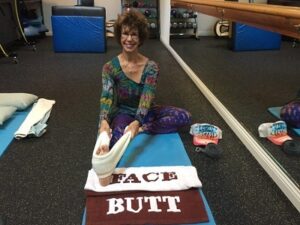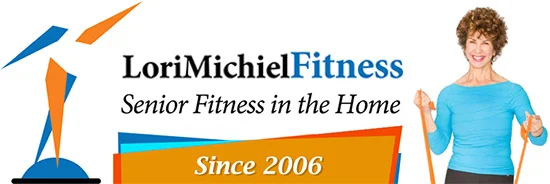 Important terms to improve your concentration, focus and results during your fitness sessions.
Important terms to improve your concentration, focus and results during your fitness sessions.
I’ve been in the presence of trainers who use “big words” when they explain a movement pattern. For instance, if a client is instructed to move “latterly”, meaning to move to one side, or told to “be in neutral”, implying a neutral stance, they may or may not understand what that means. Most likely, to an experienced exerciser it would, but not a novice or an unknowing senior recovering from surgery or suffering from chronic conditions or pain.
As the year draws to a close and you want to prepare your body for better balance, strength or overall endurance for next year, understanding common terms helps end the mystery. Knowing these terms, and not having to think about them during your session, helps you be more engaged, build body awareness and achieve quicker results. Here is a small sampling of these terms.
Abduction – a movement of a body part away from the midline. (Ex.: Walking by using your legs or arms as you move to the side.)
Adduction – a movement of a body part toward the midline of the body. (Ex.: Legs squeeze together using a ball, pillow or towel.)
Cartilage – a fibrous connective tissue that absorbs shock and reduces friction between the bones of the joint. (People with arthritis have diminished cartilage and exercise can cause pain if not careful.)
Concentric – the muscle shortens with movement. (Ex.: Doing a bicep curl with weights or with resistance bands.)
Eccentric – a contraction of a muscle in which the muscle lengthens as it develops tension. (Ex.: When returning to the original position after a concentric contraction.)
Extension – a movement that increases the angle at the joint between two bones. (Ex.: When you straighten your leg, arm or stand tall.)
Flexion – a movement that decreases the angle of a joint between two bones. (Ex.: An ankle movement going downward; making circles or using your legs, arms, shoulders, hips, back, etc.)
FITT Principle – represents frequency, intensity, time and type of exercises. (Ex.: All elements can change with exercise regularity to improve results.)
Lateral Rotation – the rotation of a body part away from the midline of the body. (See Abduction example above.)
Neutral Spinal Alignment – a posture with a neutral spine: ears, shoulders, hips and ankles are in a straight line through the body. (Ex.: Straighten your core by pulling in your belly button and keep shoulders relaxed during movement.)
Plantar Flexion – movement of the foot toward the sole of the foot. (Ex.: Improve mobility when pointing your toes downward with or without a resistance band.)
In choosing a trainer, be sure they are good communicators and you have good chemistry. You want to learn and have fun doing your exercises. Prepare. We can help. It begins with an assessment which includes a partial session. Our FAQ page aka Questions and Answers can be useful. Follow us on Facebook and LinkedIn or get some greats tips on our website at LoriMichielFitness.com. You can also email us or call us at 818-620-1442 for a consultation. All the best! – Lori
